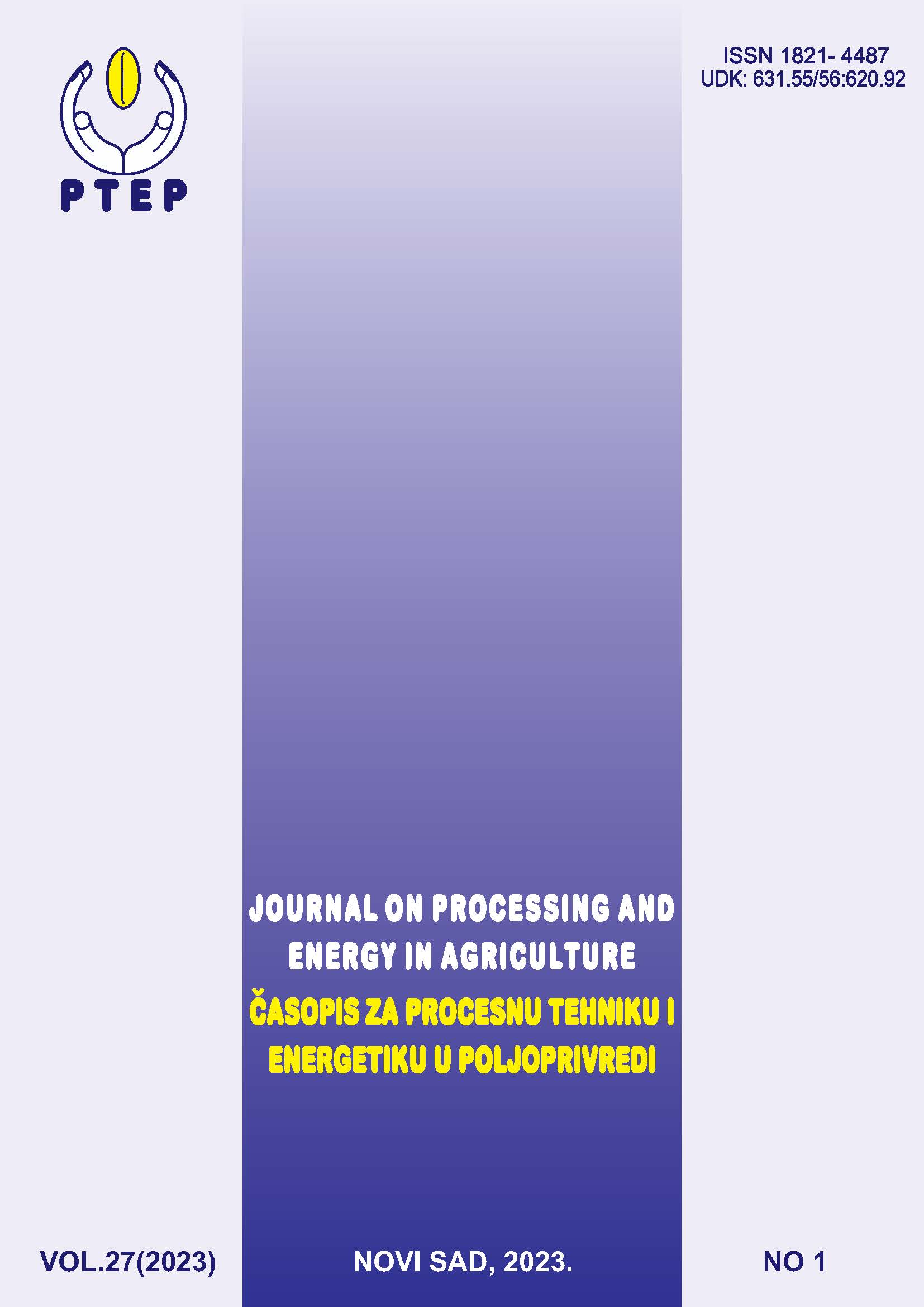APPLICATION OF LAVENDER AND MINT ESSENTIAL OILS FOR IM-PROVEMENT OF ALFALFA (MEDICAGO SATIVA L.) SEED QUALITY
Abstract
Essential oils (Eos) are widely utilised in agriculture. The study's objective was to examine the impact of Eo'son alfalfa (Medicago sativa L.) seed dormancy.
The four different varieties of alfalfa were used for the experiment (Zaječarka, Banatska, K-28, Novosadska). Two essential oils, lavender (LavandulaangustifoliaMill.) and mint (Menthapiperita L.) were applied to seeds at four concentrations:1%, 0.5%, 0.2%, and 0.02%, along with water as a control. Germination, dormant seeds and dead seeds were evaluated in a laboratory setting according to ISTA rules.
The type of Eos had no discernible influence on germinated seeds, dormancy, and dead seeds. Both oils in concentrations of 1% and 0.5% inhibited seed germination. The maximum germination of 91.66% was achieved with the Novosadska variety using lavender oil at a concentration of 0.02%, with reduced dormancy. Varieties Zaječarka and Banatska had the highest level of dead and dormant seeds when lavender and mint Eos were applied at a concentration of 0.2%.
This study showed that both Eos at a concentration of 0.02% had a stimulatory effect on seed germination, simultaneously reducing seed dormancy, emphasizing their potential use for seed quality improvement in organic farming.
References
· Dharsini, P.P., Dhanasekaran, D., Gopinath, P.M., Ramanathan, K., Shanthi, V., Chandraleka, S., Biswas, B. (2017). Spectroscopic identification and molecular modeling of diethyl7-hydroxytrideca-2, 5, 8, 11-tetraenedioate: a herbicidal compound from Streptomyces sp. Arab. J. Sci. Eng. 42 (6), 2217–2227.
· Harding, D.P., Raizada, M.N. (2015). Controlling weeds with fungi, bacteria and viruses: a review. Front. Plant Sci. 6, 659.
· Hazrati, H., Saharkhiz, M. J., Moein, M., &Khoshghalb, H. (2018). Phytotoxic effects of several essential oils on two weed species and tomato. Biocatalysis and agricultural biotechnology, 13, 204-212.
· Hegab, M.M., Khodary, S.E.A., Hammouda, O., Ghareib, H.R., 2008. Autotoxicity of chard and its allelopathic potentiality ongermination and some metabolic activities associated with growth of wheat seedlings. Afr. J. Biotechnol. 7 (7), 884–892.
· Hussain, M.I., Reigosa, M.J., 2014. Higher peroxidase activity, leaf nutrient contents and carbon isotope composition changes in Arabidopsisthaliana are related to rutin stress. J. Plant Physiol. 171, 1325–1333.
· Ilić, Z. S., Milenković, L., Tmušić, N., Stanojević, L., Stanojević, J., &Cvetković, D. (2022). Essential oils content, composition and antioxidant activity of lemon balm, mint and sweet basil from Serbia. Lwt, 153, 112210.
· Ilić, Z.; Stanojević, L.; Milenković, L.; Šunić, L.; Milenković, A.; Stanojević, J.; Cvetković, D. (2022). The yield, chemical composition, and antioxidant activities of essential oils from different plant parts of the wild and cultivated oregano (Origanumvulgare L.). Horticulturae, 8, 1042.
· International Seed Testing Association (2020). Rules for Testing Seeds; ISTA: Zurich, Switzerland.
· ISTA Working Sheets on Tetrazolium Testing. In International seed testing association ISTA, Switzerland: Bassersdorf, 2003; Volume 1, pp. 171.
· Lalitha V, Kiran B, Ravesha KA. (2011). Antifungal and antibacterial potentialityof six essential oils extracted from plant source. International Journal of Engineering, Science and Technology,3,1029–3038.
· M. Shu’aibuAbubakar and M. L. Attanda (2022). Factors That Cause Seed Dormancy, Seed Biology Updates, Nov. 2022, doi: 10.5772/intechopen.107004.
· Milenković, L., Stanojević, J., Cvetković, D., Stanojević, L., Lalević, D., Šunić, L.,Ilić, Z. S. (2019). New technology in basil production with high essential oil yield and quality. Industrial crops and products, 140, 111718.
· Mousavi, S. R., Rezaei, M., & Mousavi, A. (2011). A general overview on seed dormancy and methods of breaking it. Advances in environmental biology, 5(10), 3333-3337.
· Stanisavljević, R., Poštić, D., Milenković, J., Đokić, D.,Tabaković, M., Jovanović, S.,Štrbanović, R. (2018). Mogućnostipoboljšanjakvalitetasemenalucerkeprimenomtemperaturnihtretmanapredsetvu. Journal on Processing and Energy in Agriculture, 22(2), 76-79. https://doi.org/10.5937/JPEA1802076S
· Statistical Package SPSS 21,(version free of charge, IBM, Armonk, New York, USA).
· Swamy, M.K.; Sinniah, U.R. (2015). Acomprehensive review on the phytochemical constituents and pharmacological activities of PogostemoncablinBenth.: An aromatic medicinal plant of industrial importance. Molecules, 20, 8521–8547.
· Tabaković, M., Stanisavljević, R., Štrbanović, R., Poštić, D., &Sečanski, M. (2018). Disperzijaosobinahibridnogsemenakukuruza u odnosunarazličiteusloveproizvodnje. Journal on Processing and Energy in Agriculture, 22(1), 46-48. https://doi.org/10.5937/JPEA1801046T
· Weitbrecht, K., Müller, K., &Leubner-Metzger, G. (2011). First off the mark: early seed germination. Journal of experimental botany, 62(10), 3289-3309.https://doi:10.1093/jxb/err030
· Zanellato, M., Masciarelli, E., Casorri, L., Boccia, P., Sturchio, E., Pezzella, M., Cavalieri,A., Caporali, F., 2009. The essential oils in agriculture as an alternative strategy toherbicides: a case study. Int. J. Environ. Health 3, 198–213

